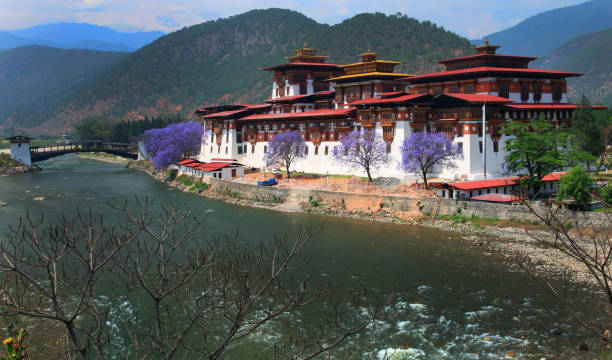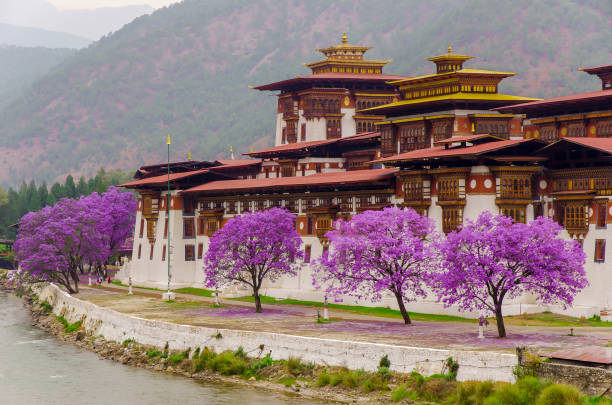Punakha Dzong
The administrative hub of Punakha District is the Punakha Dzong, also known as Pungthang Dewa chhenbi Phodrang, or "the palace of tremendous happiness or bliss", in Punakha, Bhutan. The second oldest and second largest dzong in Bhutan was built by Ngawang Namgyal, the first Zhabdrung Rinpoche, in 1637–1638 and is considered one of its most gorgeous buildings. The Rangjung Kharsapani, the holy remains of Ngawang Namgyal and the tertön Pema Lingpa, as well as other precious artifacts from the southern Drukpa Lineage of the Kagyu school of Tibetan Buddhism, are all kept in the dzong. Up until 1955, when the capital was transferred to Thimphu, Punakha Dzong served as Bhutan's administrative hub and seat of the government. In Bhutan's Tentative List for UNESCO Inclusion, it is designated as a tentative site.
The Dzong hosts the yearly Domche festival, which is heavily attended by residents of the district's remote villages. During the festival, the Zhabdrung's ranghung "self-created" Avalokitevara picture, which is housed in the dzong's utse and was imported from Tibet, is on exhibit. There are some pretty magnificent performances during this five-day celebration, also known as the Punakha festival, which takes place in February or March. The significant exhibit recreates the Tibetan invasion of Bhutan in 1639 and the Tibetans' subsequent defeat. This Zhabdrung-conceived theatrical performance dramatizes the imitation disposal of a relic into the Mo Chu River.
Location: Punakha, Bhutan












